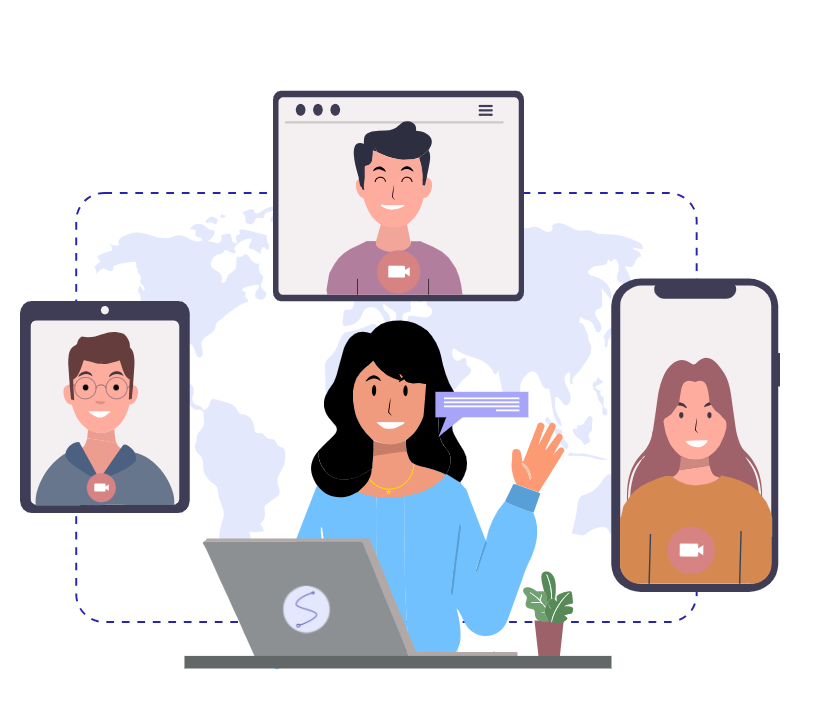Video conferencing APIs have revolutionized the way we communicate. In the past, video conferencing was limited to expensive hardware and specialized software, making it inaccessible to many people. However, with the rise of video conferencing APIs, this technology is now more accessible and affordable than ever before. In this blog post, we will explore how video conferencing APIs are changing the way we communicate.
What are Video Conferencing APIs?
Before we dive into the ways in which video conferencing APIs are changing communication, let’s first define what they are. API stands for Application Programming Interface. An API is a set of protocols, tools, and routines for building software and applications. Video conferencing APIs, therefore, provide developers with the tools they need to build video conferencing features into their software or applications.
Video conferencing APIs typically provide a range of features such as video and audio streaming, screen sharing, recording, chat, and more. These features can be used to build a variety of applications, from remote collaboration tools to telemedicine platforms.
Now that we understand what video conferencing APIs are, let’s explore how they are changing the way we communicate.
-
Improved Access to Communication – One of the biggest ways in which video conferencing APIs are changing communication is by improving access to communication. In the past, video conferencing was reserved for large companies or wealthy individuals who could afford expensive hardware and software. However, video conferencing APIs have made it possible for anyone to build video conferencing features into their software or application.
This means that small businesses, entrepreneurs, and individuals can now access video conferencing technology at a fraction of the cost. Video conferencing APIs have made communication more accessible and affordable for everyone, which has had a significant impact on the way we communicate.
-
Enhanced Remote Collaboration – Another way in which video conferencing APIs are changing communication is by enhancing remote collaboration. With the rise of remote work, it has become increasingly important to have tools that allow for seamless collaboration between team members who may be located in different parts of the world. Video conferencing APIs provide developers with the tools they need to build remote collaboration tools that include features such as screen sharing, file sharing, and chat. These features make it possible for team members to work together as if they were in the same room, even if they are located on opposite sides of the world.
-
Improved Customer Support – Video conferencing APIs have also improved customer support. In the past, customer support was limited to phone calls, emails, and chat. However, video conferencing APIs have made it possible for companies to provide their customers with video support. Video support allows customers to have face-to-face interactions with support agents, which can help to build trust and improve the customer experience. Additionally, video support allows support agents to see exactly what the customer is experiencing, which can make it easier to diagnose and solve problems. Video support has become particularly important in industries such as healthcare, where remote consultations have become increasingly popular. Video conferencing APIs have made it possible for healthcare providers to offer remote consultations, which has improved access to healthcare for patients who may live in remote or underserved areas.
-
Enhanced Education and Learning – Video conferencing APIs have also had a significant impact on education and learning. With the rise of remote learning, it has become increasingly important to have tools that allow for seamless communication and collaboration between students and teachers. Video conferencing APIs provide developers with the tools they need to build remote learning platforms that include features such as video streaming, screen sharing, and chat. These features make it possible for students and teachers to communicate and collaborate in real-time, regardless of their physical location.
-
Increased Accessibility – Video conferencing APIs have also increased accessibility for individuals with disabilities. In the past, video conferencing was often inaccessible to individuals who were deaf or hard of hearing. However, video conferencing APIs have made it possible for developers to build features that support closed captioning and sign language interpretation. Additionally, video conferencing APIs have made it possible for individuals with mobility impairments to participate in video conferences. For example, some video conferencing APIs provide support for keyboard navigation, which makes it easier for individuals who are unable to use a mouse to participate in video conferences.
-
Improved International Communication – Finally, video conferencing APIs have improved international communication. With the rise of globalization, it has become increasingly important to have tools that allow for seamless communication between individuals who may be located in different parts of the world.Video conferencing APIs provide developers with the tools they need to build video conferencing features that support multiple languages and time zones. These features make it possible for individuals from different parts of the world to communicate and collaborate in real-time, regardless of their physical location.
Video conferencing APIs have revolutionized the way we communicate. They have improved access to communication, enhanced remote collaboration, improved customer support, enhanced education and learning, increased accessibility, and improved international communication.
As video conferencing APIs continue to evolve, we can expect to see even more innovative applications of this technology in the future. Whether it’s in the form of remote healthcare, virtual events, or immersive virtual reality experiences, video conferencing APIs are changing the way we communicate and connect with one another.
At Sariska, our mission is to enable seamless access to development tools around real-time messaging, programmable audio and video, streaming and interactive capabilities across platforms and devices.


